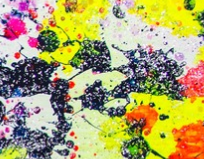Team Problem Solving and Motivation under Disorganization 1.0.0
In modern organizations, teams are an essential component in providing higher manpower (Huckman and Staats, 2013); Therefore, developing an understanding of how teams can be structured in order to exploit team dynamics and enhance problem-solving among team members is important for managers. In rigidly structured organizations, teams tend to mirror the organizations’ inflexible structure (Coopman, 2001); whereas in less rigidly structured organizations, teams tend to be less structured (March, 1991; Coopman, 2001). The process of reducing highly structured organizations became the precursor to the concept of ‘disorganization management’. ‘Disorganization’ is the reduction of organizational protocols and structure; thus, enabling flexibility and better access to resources among the workforce (Merton, 1968; Crozier, 1969). Given the complexity of contemporary business life (e.g., the interplay between a vast network of suppliers, intermediaries, customers and stakeholders) and the environment (e.g., continually changing social, political, economic and technological forces) in which businesses operate, disorganization is bound to occur to some degree (Bridges, 2009; Sellen and Harper, 2003). This situation provides opportunities to proactively leverage the potential benefits of disorganized work environments on teams instead of simply reacting to emerging disorganization. Organizational teams can be structured in a multitude of ways. Hence, this study examines changes of motivation when teams engage in problem solving under disorganization using agent-based modeling (ABM).

